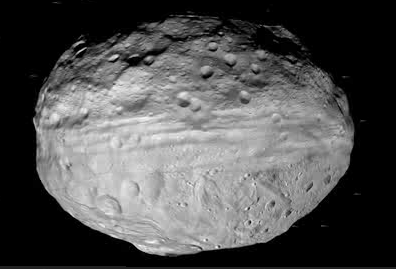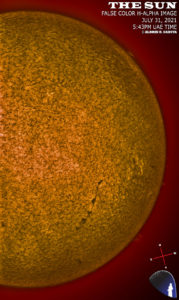Vesta, a minor-planet designated as 4 Vesta – is one of the largest objects in the asteroid belt with a diameter of 525 kilometres (326 mi).
It was discovered by the German astronomer Heinrich Wilhelm Olbers on 29 March 1807 and is named after Vesta the virgin goddess of home and hearth from Roman mythology.
Vesta is the second-most-massive and second-largest body in the asteroid belt next to the dwart planet Ceres and it contributes an estimated 9% of the mass of the asteroid belt It is slightly larger than Pallas, though significantly more massive.
Vesta is the only known remaining rocky protoplanet of the kind that formed the terestrial planents (a planet that is composed primarily of silicate rocks or metals.)
Numerous fragments of Vesta were ejected by collisions one and two billion years ago that left two enormous craters occupying much of Vesta’s southern hemisphere. Fall over Debris from these events to Earth was called as howardite-eurcite-diogenite metiorites. These meteorites gave a rich source of information about Vesta.
NASA’s Dawn spacecraft obtained this image of the giant asteroid Vesta in September 2011. It is interesting that this image of Vesta looks somewhat like a human brain. The Dawn Mission
Vesta is the brightest asteroid visible from Earth. Its maximum distance from the Sun is slightly greater than the minimum distance of Ceres from the Sun, though its orbit lies entirely within that of Ceres.
Animated images of Vesta was observed and taken by Alejandro Palado from Al Sadeem Observatory using Meade LX850 16″ telescope and SBIG STT 8300M CCD camera.
TIMELINE OF THE EVOLUTION OF VESTA
2–3 million years Accretion completed
4–5 million years Complete or almost complete melting due to radioactive decay Aluminum, leading to separation of the metal core
6–7 million years Progressive crystallization of a convecting molten mantle. Convection stopped when about 80% of the material had crystallized
Extrusion of the remaining molten material to form the crust, either as basaltic lavas in progressive eruptions, or possibly forming a short-lived magma ocean.
The deeper layers of the crust crystallize to form plutonic (pluton is a body of intrusive igneous rock that is crystallized from magma slowly cooling below the surface of the Earth) rocks, whereas older basalts are metamorphosed due to the pressure of newer surface layers.
Slow cooling of the interior
After the discovery of Vesta, no further objects were discovered for 38 years, and the Solar System was thought to have eleven planets. However, in 1845, new asteroids started being discovered at a rapid pace, and by 1851 there were fifteen, each with its own symbol, in addition to the eight major planets. It soon became clear that it would be impractical to continue inventing new planetary symbols indefinitely, and some of the existing ones proved difficult to draw quickly. That year, the problem was addressed by Benjamin Apthorp Gould, who suggested numbering asteroids in their order of discovery, and placing this number in a disk (circle) as the generic symbol of an asteroid. Thus, the fourth asteroid, Vesta, acquired the generic symbol ④. This was soon coupled with the name into an official number–name designation, ④ Vesta, as the number of minor planets increased. By 1858, the circle had been simplified to parentheses, (4) Vesta, which were easier to typeset. Other punctuation, such as 4) Vesta and 4, Vesta, was also used but had more or less completely died out by 1949. Today, either Vesta, or, more commonly, 4 Vesta, is used.
Reference:
https://en.wikipedia.org/wiki/4_Vesta





